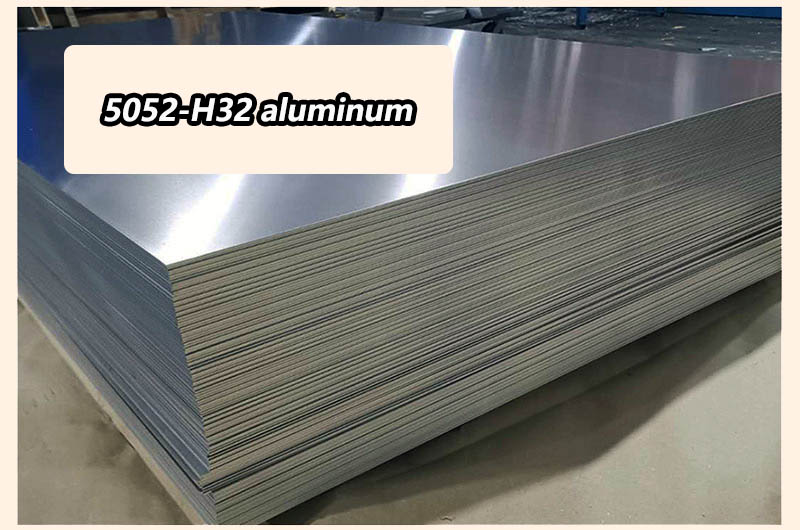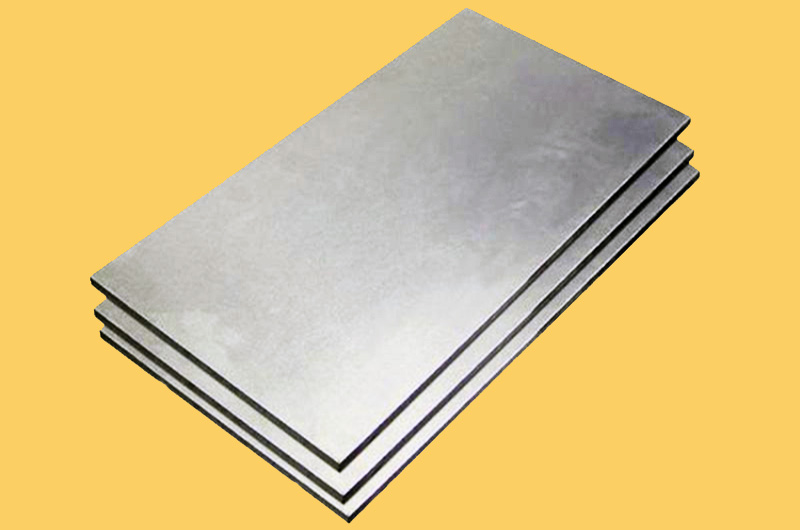5052 aluminum in H32 state is slightly stronger than 5251 and has medium to high fatigue strength. Aluminum alloy 5052 in the H32 state has very good corrosion resistance to seawater as well as marine and industrial atmospheres. It also has very good weldability and good cold formability.
Aluminum alloys are widely used in various industries due to their excellent properties such as light weight, corrosion resistance, and excellent formability. Among these alloys, 5052-H32 aluminum stands out as a versatile and highly sought-after material.

5052-H32 Aluminum Composition
5052-H32 aluminum belongs to the 5xxx series of aluminum alloys, known for its excellent corrosion resistance and weldability. The designation "5052" refers to a specific alloy within the series, while "H32" refers to the state or condition of the material. The elemental composition of 5052-H32 aluminum usually includes:
- Aluminum (Al): Primary component, making up the majority of the alloy.
- Magnesium (Mg): Primary alloying element that increases strength and corrosion resistance.
- Chromium (Cr): Improves the corrosion resistance of alloys, especially in marine environments.
- Manganese (Mn): Helps increase the strength and workability of the alloy.
- Other Trace Elements: Small amounts of other elements may be present depending on the manufacturing process and desired properties.
5052-H32 Aluminum Properties
5052 h32 aluminum is wear-resistant, anti-slip, corrosion-resistant, low maintenance, anti-static, lightweight, etc.
- Strength: 5052-H32 provides medium to high strength and is suitable for use on structural components and panels.
- Corrosion Resistance: This alloy has excellent corrosion resistance, especially in marine environments and acidic conditions.
- Formability: It can be easily formed into various shapes and profiles through bending, stamping, drawing and other processes.
- Weldability: 5052-H32 aluminum is easily welded using conventional methods, allowing the fabrication of complex structures.
- Surface Treatment: This material receives a variety of surface treatments, including anodizing, painting, and powder coating, to enhance aesthetics and durability.
- Lightweight: Aluminum’s low density enables lightweight designs, reducing overall product weight and improving fuel efficiency in transportation applications.
- Conductivity: Although aluminum is not as conductive as copper, it still provides sufficient conductivity for many electrical and electronic applications.
5052 H32 Aluminum Weldability
- Solderability - Gas: Good
- Weldability - Arc: Very good
- Solderability - Resistor: Very Good
- Brazeability: Acceptable
- Solderability: Not recommended

Processing Methods of 5052 H32 Aluminum
- Extrusion: Alloys can be extruded into complex shapes and profiles for structural applications.
- Sheet forming: Aluminum sheets are formed into panels, covers and other parts through processes such as rolling and stamping.
- Welding: 5052-H32 aluminum is easily welded using methods such as MIG, TIG, and resistance welding to create components.
- CNC Machining: Computer Numerical Control (CNC) machining is used to achieve precise dimensions and complex features in machined parts.
- Anodizing and Surface Treatments: Surface treatments such as anodizing, painting, and powder coating enhance corrosion resistance and improve aesthetics.
Advantages of 5052-H32 Aluminum
- Cost-Effectiveness: Aluminum alloys offer a cost-effective alternative to other materials, balancing performance with economics.
- Reduced weight: Aluminum’s lightweight properties help save fuel, increase payload capacity and make it easier to handle during the manufacturing process.
- Corrosion Resistance: The alloy’s inherent corrosion resistance extends product life and reduces maintenance requirements, especially in harsh environments.
- Design Flexibility: Aluminum’s formability and machinability enable complex designs and custom configurations to meet specific application needs.
- Environmental Sustainability: Aluminum is fully recyclable, promoting sustainability and minimizing environmental impact throughout the product life cycle.
- Versatility: 5052-H32 aluminum’s compatibility with a variety of processing methods and surface finishes expands its usefulness in different industries and applications.
5052-H32 Aluminum Applications
The versatility of 5052-H32 aluminum makes it suitable for different industries including treads, boiler making, vessels, nameplates, road signs, building paneling, welded pipes, chemical industry, irrigation, desalination units, pressure vessels, rivets and more.
- Aerospace: Aircraft components, such as fuselage panels, wings and structural components, benefit from the alloy's lightweight and corrosion resistance.
- Marine: Due to its excellent resistance to salt water corrosion, 5052-H32 aluminum is used for hulls, decks and marine fittings.
- Automotive: Automotive body panels, chassis components and heat exchangers use 5052-H32 because of its combination of strength and formability.
- Construction: Architectural elements, roof panels and building exteriors take advantage of the corrosion resistance and aesthetic properties of the alloy.
- Electronics: Cases, heat sinks and electronic housings benefit from the alloy's thermal conductivity and formability.
- Packaging: Aluminum cans, lids and closures utilize the material's lightweight properties and barrier properties to preserve food and beverages.
- General Manufacturing: A variety of manufacturing parts, including signage, water tanks and furniture, rely on the versatility and cost-effectiveness of 5052-H32 aluminum.
5052-H32 aluminum is a versatile material with a wide range of uses due to its exceptional combination of strength, corrosion resistance, formability and lightweight. From aerospace and automotive to marine and construction, this alloy plays a key role in modern manufacturing and engineering.

